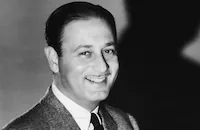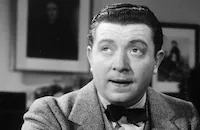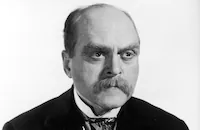Moonlight Murder

Brief Synopsis
Cast & Crew
Edwin L. Marin
Chester Morris
Madge Evans
Leo Carrillo
Frank Mchugh
Benita Hume
Film Details
Technical Specs

Synopsis
At the dress rehearsal for a Hollywood Bowl production of Giuseppe Verdi's Il trovatore , opera star Gino D'Acosta is delayed in his dressing room by a swami who warns that if he sings the next day, he will die. Gino laughs at the prediction, but ballerina Diana, Gino's latest paramour, is worried, as is Louisa, Gino's former love. Gino's romantic entanglements have incurred the jealousy of Louisa, as well as the hatred of Louisa's husband, conductor Godfrey Chiltern, and Diana's boyfriend, Pedro. At the rehearsal, Gino is attacked by Bejac, an insane composer who could not compel the tenor to listen to his new opera. Though the wound to his throat is only superficial, Gino's closest friend, Dr. Adams, is summoned. Adams asks Gino not to attend the performance the next night, but Gino again laughs off the swami's curse. Adams then has Bejac sent for observation to the police psychiatric ward, where the composer vows to "get even" with Gino. Detective Steve Farrell is sent by Chief Quinlan to investigate the attack and becomes friendly with Adams, who often works with the police. Steve is immediately attracted to Adams' niece Toni, who assists her uncle. After questioning Diana, Steve discovers that the knife used in the attack belongs to Pedro. The next day, Gino receives a doll impaled on a sword that is accompanied by a note saying "Sing tonight and die ," but he still plans to perform. Just before the opera, he tries to hoodwink Diana into believing that he only loves her, then does the same to Louisa, but instead he makes both women angry with him. Observing Louisa's mood, Chiltern becomes extremely sullen. Meanwhile, Bejac overpowers Steve and another policeman as they take him to an asylum, and he escapes. During the intermission, Steve goes to the bowl to look for Bejac and warn Gino, after which Diana warns him about Pedro. Backstage, Steve finds an extra who was knocked unconscious by Bejac. When Gino returns to the stage, his aria is a triumph, but after singing he collapses and dies. Though the doctors at first think that Gino died of a heart attack, Toni runs some tests on the wine glass from which Gino drank during the performance and discovers that it had been poisoned. An autopsy then reveals that Gino's lungs were filled with a rare poison gas, that was ingested rather than drunk. A few days later, Diana is found in Gino's room dead, killed by the same poison. Pedro is then arrested. When Steve searches the room, he finds a tiny crystal bulb on the floor and an analysis reveals that the bulb contained the rare poison gas. Steve then recalls that the bulb was similar to the one used by Chiltern on the end of his baton. While Steve later snoops around the bowl with Toni, he discovers a test tube and Toni takes it back to her lab to analyze. She cannot believe her conclusions, but it appears that her uncle had filled the test tube with the poison gas. Just then, Adams calls Quinlan and asks him to come over to hear a confession. He then tells Toni and Steve that he poisoned Gino because he had discovered that Gino had an illness that would bring him a painful death. Wanting to spare his friend great agony, Adams decided to poison him with the painless gas, which he placed in a crystal bulb in Gino's microphone. Diana's death was caused when she opened a jar that Adams had prepared as a back-up. Just then, Bejac breaks in and attempts to kill Adams, but the police arrive and shoot Bejac to death. Quinlan thinks that Bejac was the murderer, and Steve is willing to go along with that, but Adams insists on admitting his guilt and accepting punishment, realizing that no one has the right to play "God."

Director

Edwin L. Marin
Cast

Chester Morris

Madge Evans

Leo Carrillo

Frank Mchugh

Benita Hume

Grant Mitchell

Katherine Alexander

J. Carrol Naish

H. B. Warner
Duncan Renaldo
Leonard Ceeley

Robert Mcwade
Pedro De Cordoba
Charles Trowbridge
Ernie Adams

Lee Phelps
Billy Dooley
Ernie Alexander
J. P. Mcgowan
Rosina Galli
Pat O'malley
Greta Meyer
Don Brodie
Edward Hearn
Louis Hughes
Sarah Edwards
Claudia Coleman
Jack Baxley
Crew
Salvatore Cammarano
Charles [g.] Clarke
Albert J. Cohen
Cedric Gibbons
Lucien Hubbard
Ben Lewis
Ned Marin
Alfonso Pedroza
Florence Ryerson
Gabriel Scognamillo
Les Selander
Robert T. Shannon
Douglas Shearer
Herbert Stothart
Dolly Tree
Giuseppe Verdi
Edward Ward
Edwin B. Willis
Edgar Allan Woolf
Wilhelm Von Wymetal

Film Details
Technical Specs

Articles
moonlight murder -
By Richard Harland Smith

moonlight murder -
Quotes
Trivia
Notes
A Hollywood Reporter production chart erroneously listed this film under the title Moonlight and Murder. Portions of the film were shot on location at the Hollywood Bowl.















